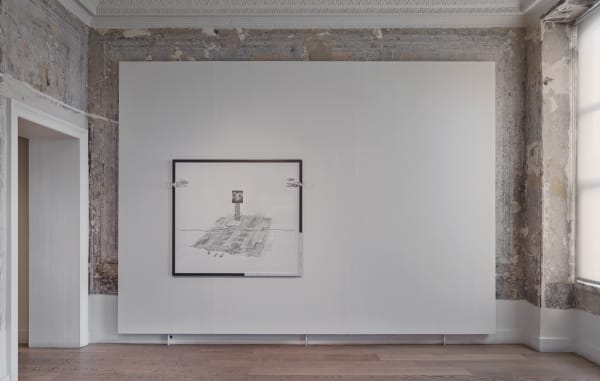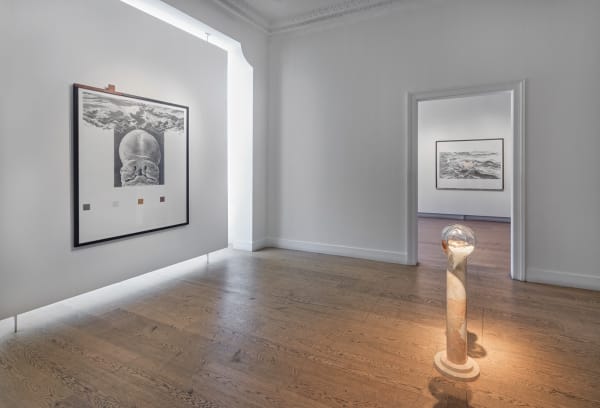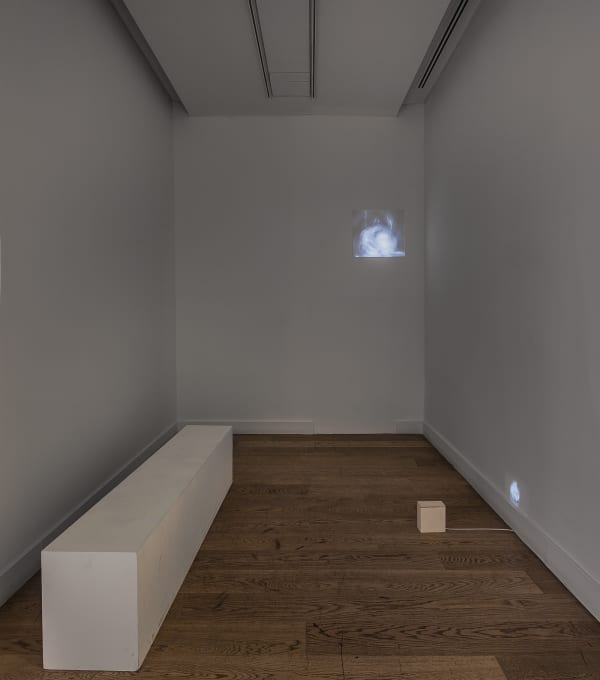Born of the Interface: Burcu Yağcıoğlu
Galerist presents Born of the Interface, the fifth solo show by Istanbul-based artist Burcu Yağcıoğlu at the gallery. This exhibition, radical both philosophically and formally, comprises large-scale drawings, a video and a sculpture containing organic material.
On the 18th November of this year, Burcu Yağcıoğlu had an ovarian teratoma surgically removed from her body. Fortunately benign, the teratoma she was carrying inside her nevertheless became fascinating to Yağcıoğlu, tying in as it did with her-long held interest in a cluster of related subjects; cyborgs, replication, the boundaries (or lack of) between machinic and organic processes and 3-D bioprinting.
The exhibition revolves around the image and idea of the teratoma, technobiocultural phenomena and 3-D bio-printing; the video combines footage of the laparoscopy surgery Yağcıoğlu underwent to have the tumor removed with footage of animals, humans and machines found on the internet. The sculpture, sitting atop a marble plinth, combines mechanic elements, referencing both 3-D bioprinting and the teratoma. The large-scale drawings, meanwhile. strip away the pejorative associations that surround the teratoma and recast it as a symbol of a new, excessive, science-fiction-like, mode of reproduction.
Teratomas occur when the growth patterns of some cells become defective and start growing in the wrong place in the wrong way. Sometimes teratomas are found that contain skin, bone and hair. Very occasionally they can resemble, tiny, misshapen, malformed humans. The overwhelmingly natural reaction to such specimens of horror and disgust is reflected in language the use; the English word, teratoma, is etymologically derived from the Greek ‘teratos’, meaning a monster.
It is this horror, its understanding and deconstruction that animates this body of Yağcıoğlu’s work. The horror in question is existential. Teratomas (especially when most complex and ‘fully’ formed) strike at the heart of our self-definition as unique, holistic and intentional entities. Their existence, proving the highly contingent nature of biological processes, reveals the accidental and precarious nature of our own emergence and very being.
With beauty, elegance and a clear-eyed lack of sentimentality, Yağcıoğlu’s work presents us with art for a post-human age, where weak thinking and psychology is left behind, where the organic and inorganic, animal and machine have merged… an age that has already arrived and in will increasingly be populated by beings born of the interface….
__________________________________________________
1. “A cyborg exists when two kinds of boundaries are simultaneously problematic: 1) that between animals (or other organisms) and humans, and 2) that between self-controlled, self-governing machines (automatons) and organisms, especially humans (models of autonomy). The cyborg is the figure born of the interface of automaton and autonomy.”
Donna Haraway, Primate Visions. Race, Gender and Nature in the World of Modern Science, (New York, 1989)
2. Teratoma: A type of germ cell tumor that may contain several different types of tissue and sometimes mature elements such as hair, muscle, and bone. Teratomas occur most often in the ovary, testis, and in the sacrococcygeal region (near the tailbone) in children. A teratoma may be benign or malignant.









